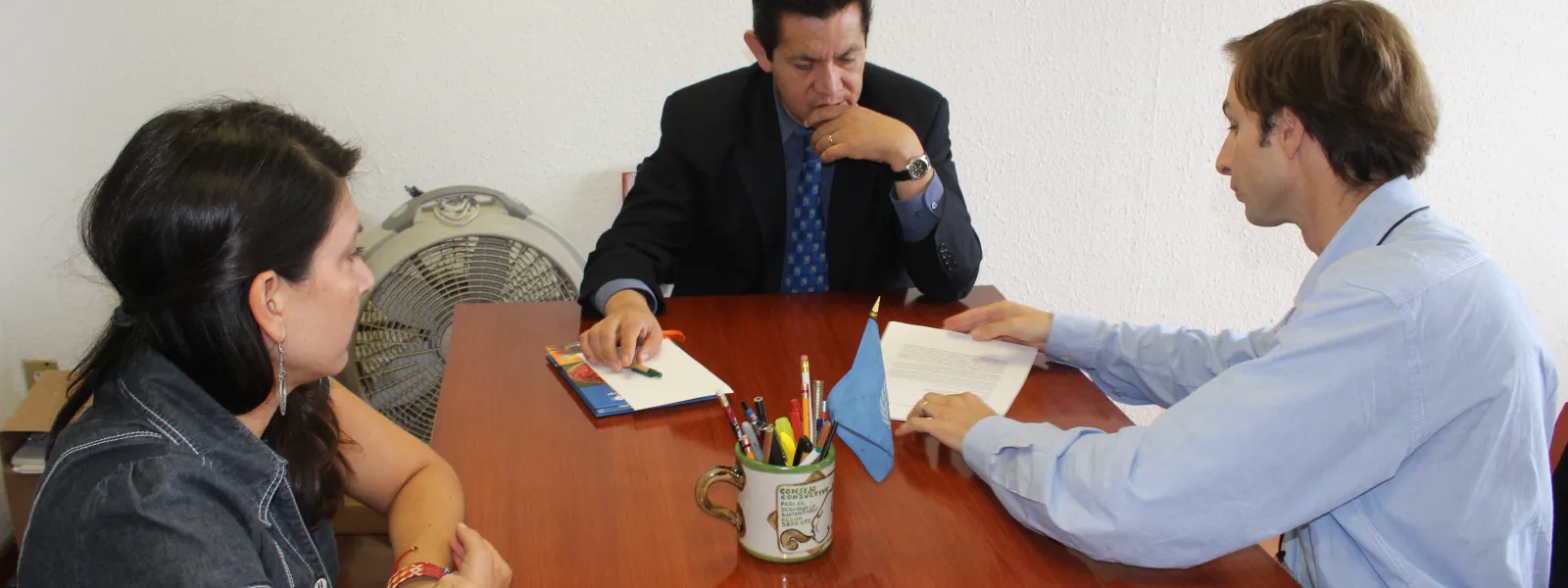
Nearly 37,000 people urge SEMARNAT to protect Mexico’s natural treasures
The Los Tuxtlas Biosphere Reserve and the Veracruz Reef System are at risk from the expansion of the Port of Veracruz, authorized by SEMARNAT.
Signatures to protect the important natural sites were collected on a citizens’ petition at change.org/saveveracruz
A coalition of organizations has alerted the Scientific Committee of the Inter-American Commission for the Protection of Sea Turtles of the threat the project poses to sea turtles.
Yesterday civil society organizations delivered more than 36,000 signatures urging Mexico’s Secretary of Environment and Natural Resources (SEMARNAT) to revoke an environmental permit granted for the extraction of basaltic rock from Los Tuxtlas Biosphere Reserve for the expansion of the Port of Veracruz. The highly successful citizens’ petition was delivered to José Luis Juan Bravo Soto, the Director of Citizen Services at SEMARNAT, and David Gutiérrez Carbonell, the Director General of Conservation Development at CONANP. The authorization granted to the Port Authority of Veracruz by the government in June 2014 would increase the damage the port has historically cause to the surrounding coral reef ecosystem, and put in danger two of the most important natural treasures in Mexico: the Los Tuxtlas Biosphere Reserve and the Veracruz Reef System.
The Interamerican Association for Environmental Defense (AIDA), the Centro Mexicano de Derecho Ambiental, A.C. (CEMDA) and the organizations Resistencia Organizada por la Conservación Ambiental (La Roca) and the Asamblea Veracruzana de Iniciativas y Defensa Ambiental (LAVIDA) stated in a press conference that the Veracruz Reef System is already in grave danger due to SEMARNAT’s approval, without sufficient technical and scientific information, of a plan to modify the borders of the Veracruz Reef System National Park in order to expand the Port of Veracruz.
Permission granted for the extraction of basaltic rock from Los Tuxtlas Biosphere Reserve for construction of the port’s new jetties conflicts with the Reserve’s management program, which expressly prohibits the use of explosives in the area. This region contains one of the last rainforests in Mexico, serves as a natural barrier against hurricanes and tropical storms, provides a refuge to millions of plant and animal species, and is home to many communities.
In addition to actions taken so far, on September 22 AIDA and CEMDA presented a report before the Scientific Committee of the Inter-American Convention for the Protection and Conservation of Sea Turtles (IAC), detailing the direct and indirect impacts that the expansion of the Port of Veracruz would have on sea turtles and their habitat.
The Veracruz Reef System is the largest coral ecosystem in the Gulf of Mexico. It works as a natural barrier against waves and storms; in 2010 it protected the city of Veracruz from Hurricane Karl. It is also home to a large variety of flora and fauna. The coasts of Veracruz, including the reef system, receive at different times of year five species of neotropical sea turtles.
The Port Authority said in its environmental impact statement that the project “will never have a direct effect on protected species.” The statement, however, failed to provide protection measures for sea turtles, particularly for the hawksbill turtle, listed as a threatened species under both the Sea Turtle Convention and Mexican law. This species is found in the Veracruz Reef System National Park and has migration routes throughout the Gulf of Mexico.
SEMARNAT authorized the expansion project in December 2013, without requiring a special management plan for the conservation of the hawksbill sea turtle. The authorization, therefore, runs contrary to the obligation of the Mexican government to promote the protection, conservation and recovery of sea turtle populations and the habitat on which they depend, particularly spawning and feeding grounds. It does nothing to restrict human activities that could affect the turtles, particularly during periods of breeding and incubation.
The Veracruz Reef System was declared a Natural Protected Area in 1992 and was registered, in 2004, as a Wetland of International Importance in accordance with the characteristics established by the Ramsar Convention. The authorization granted by the environmental authority therefore contravenes national and international standards and does not properly consider the cumulative impacts that the project would have on the ecosystem. It also ignores the Mexican government’s responsibility to protect the biodiversity found within its territory, and disregards the National Biodiversity Strategy and provisions of the Convention on Biological Diversity.
Sign the petition at: change.org/saveveracruz
Photos of the delivery of signatures: http://www.cemda.org.mx/?p=4555
